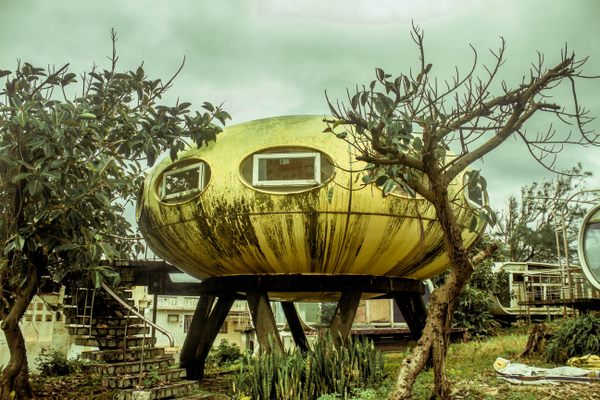An Ancient Snapshot of Native Taiwanese Culture
A newly available Library of Congress collection shows the lives of an oft-overlooked minority.

In celebration of Asian Pacific American Heritage Month, the Library of Congress, in conjunction with the National Central Library of Taiwan, has digitized and released 1,000 rare Chinese books produced prior to 1796. Some of the titles date back as far as the 11th century. “These are the most valuable resources of premodern China in the Library of Congress,” says Qi Qiu, of the library’s Asian Division. The collection brings together Buddhist sutras, ancient maps, books on medical remedies, and other rare insights into ancient China. Among the treasures, 12 watercolor paintings take viewers on a voyage through indigenous life on the island of Formosa, better known as Taiwan.

The paintings are a look into the daily lives and customs of the aborigines who called Taiwan home for more than 6,000 years before the 17th-century arrival of Han settlers from the mainland. They depict a subsistence lifestyle, from picking coconuts to hunting deer to planting taro. The Council of Indigenous Peoples recognizes 16 tribes native to the island. Taiwanese aborigines are considered Austronesian and have genetic and cultural ties with other indigenous populations across the Pacific, such as the Polynesians and the Maori. It’s believed that Taiwan was actually the launching point for many of the cultures that settled the Pacific region.
With the arrival of the Han, the lifestyle the aborigines knew changed forever. Many people were forced to assimilate into the Han social order, and had their lands taken, or were met with outright violence. In fact, the 12 paintings are believed to have been commissioned by Emperor Qianlong after the royal inspector visited the island in the 1740s. Today, more than 23 million people live in Taiwan, but only around 2 percent belong to an aboriginal group. The Library of Congress selection not only highlights the aborigines of Taiwan but also another ethnic minority in China, the Miao from the mountainous regions of southern China, who are featured in another collection of watercolors.

According to Jeffrey Wang, Chinese reference specialist at the library, the digitized collection represents a small slice of their 5,300 rare Chinese books. The initial release features 1,000 items, and the plan is to add another 1,000 in the near future. Due to preservation issues, some of the collection can’t be viewed by the public, according to Wang, so digitization is the only way to make them easily accessible to researchers, students, and history buffs.“That’s why we spent so much money and time to do this,” he says.




























Follow us on Twitter to get the latest on the world's hidden wonders.
Like us on Facebook to get the latest on the world's hidden wonders.
Follow us on Twitter Like us on Facebook